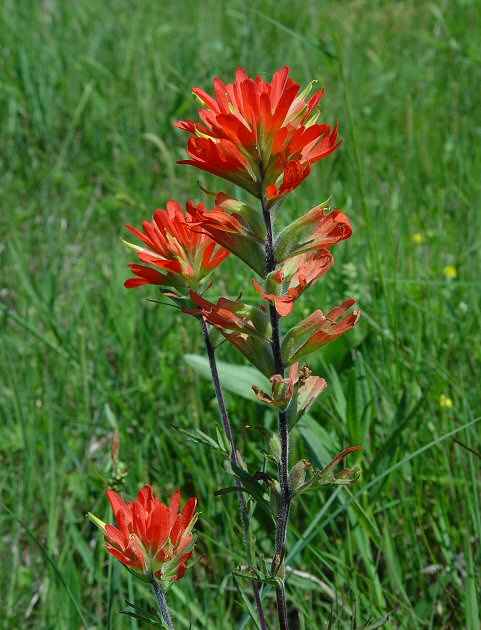E-mail:
jalbert@ou.edu
Announcements
Review sheet for final exam.
Supplemental study problems.
Solutions to third exam.
Review sheet for the third exam.
Solution to problem 8 in section 5.2.
In class the other day we mentioned the following problem: suppose you have three colors of paint, say red, blue, and green, and you want to paint all six faces of a cube.
How many different ways are there to do it, using the three colors? For example, you could paint all six sides red, or you could paint two opposite sides red, two other opposite
sides blue, and two other opposite sides green. What makes the problem a little tricky is that you are supposed to consider two colorings the same as long as the cube with
one of the two colorings can be rotated to look like a cube with the other coloring. Thus, for example, the coloring in which the top and bottom are both blue and the four
other sides are red would be considered the same as the coloring in which the front and back are both blue and the four other sides are red.
This cube-coloring problem was apparently asked as an interview question for software engineers/developers at Infosys.
The answer is 57, but I suppose the interviewers would not be too impressed if you sat there and tallied up all the possibilities by hand, even if you were able to do that and get the
right answer. A quicker way to answer the question requires more sophisticated math than what we have covered in Discrete Math this semester, but which would not be too hard
for someone who has had an undergraduate course in abstract algebra. You can find a complete discussion on Wikipedia at the articles titled Burnside's lemma
and Cycle index.
A nice article about some of the surprising properties of the prime numbers is The First 50 Million Prime Numbers by
Don Zagier.
Here are two geometric proofs for the formula for the sum of squares from 1^2 up to n^2: one due to Archimedes (who lived from
about 280 B.C. to about 211 B.C.), and another in this presentation by Rob Bayer (see the slide titled "Sum of Squares: Elegant Proof").
Solutions to second exam.
Review sheet for the second exam.
Solutions to Assignment 5.
Solutions to first exam.
Review sheet for the first exam.
Here is the syllabus for the course.
Here is a link to the story "Love is a Fallacy", by Max Shulman, which I mentioned in class while we
were discussing logic and fallacies.
Homework
Assignment |
Due Date |
Problems |
| 1 |
Monday, August 27 |
1.1: 12, 14, 36(b,d,f); 1.2: 19, 20, 25; 1.3: 22.
|
| 2 |
Wednesday, Sept 5 |
1.4: 24, 32, 50; 1.5: 33, 40; 1.6: 15; 1.7: 17(a).
|
| 3 |
Wednesday, Sept 12 |
1.8: 27, 34; 2.1: 11, 21, 33(a); 2.2: 17, 18(c,d,e).
|
| 4 |
Monday, Sept 17 |
2.1: 27; 2.2: 32, 36; 2.3: #10, 11, 16, 20(a,b).
|
| 5 |
Friday, Sept 28 |
Do the problems on this handout. (Also available at D2L in the "content" section for this course.)
|
| 6 |
Friday, Oct 5 |
2.4: 8, 10(c,d,e); 4.1: 7, 20, 27, 30, 38. (Extra credit 4.1 #39.)
|
| 7 |
Monday, Oct 15 |
4.2: 2, 4, 21(a,b), 22(a,b), 31.
|
| 8 |
Monday, Oct 22 |
4.3: 24, 26, 30, 32(b,d,e), 40(a,c,e,g).
|
| 9 |
Monday, Oct 29 |
5.1: 4, 6, 18, 32.
|
| 10 |
Wednesday, Nov 7 |
5.1: 36; 5.2: 8, 14.
|
| 11 |
Monday, Nov 12 |
6.1: 1, 4, 7, 8, 9, 10, 11, 16, 32.
|
| 12 |
Monday, Nov 19 |
6.2: 14, 22, 34, 44.
|
| 13 |
Wednesday, Nov 28 |
6.3: 22(a,b,c), 26, 34, 36; 6.5: 4, 8
|
| 14 |
Monday, Dec 3 |
6.5: 9(b,d), 14, 30, 32; 9.1: 3(a,b,c,d), 4; 9.5: 2, 27
|
